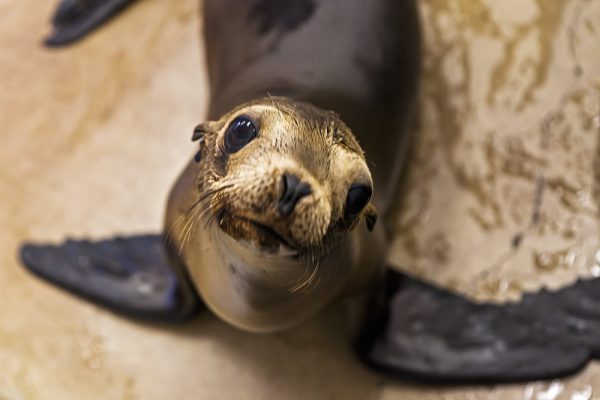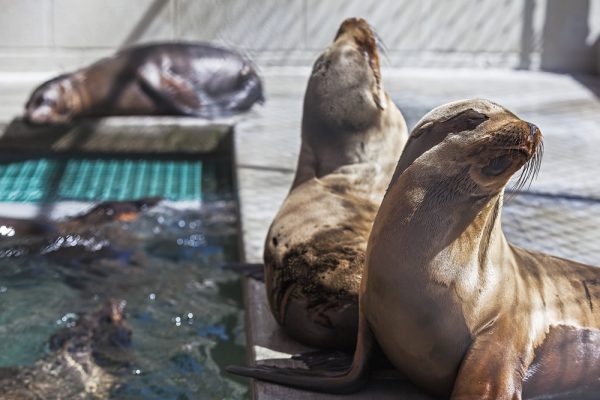By Daniel Langhorne, Special to the Independent

Keith Matassa and the veterinary staff at the Pacific Marine Mammal Center have been working nearly around the clock for the last couple of weeks to rescue and care for sick dolphins, elephant seals and sea lions stranded on Orange County beaches and jetties.
On Thursday, the Center was hosting 44 patients, including California sea lions and elephant seals, which is about triple the amount staffers treated at this time last year. They’ve also responded to a concerning 12 dolphin standings so far this year, but in two cases, the animals made it out to sea before rescuers could reach them.
“It’s a little worrisome this year because we’re seeing multiple species earlier,” Matassa said.
The vast majority of stranded dolphins have to be humanely euthanized because they’re in terrible shape by the time they reach the sand. They’re not only suffering from whatever illness brought them to the beach, but the physical damage of rolling in the surf and the hundreds of pounds of weight they carry that crushes their organs.
Center staffers use these unfortunate deaths as opportunities to conduct research necropsies to learn more about what is happening in the ocean and how it’s impacting dolphins. Veterinarians collect tissue samples and send them to universities such as UC Davis and Tufts University for analysis.

Peter Chang, CEO of the Pacific Marine Mammal Center, said this research is a big part of the Center’s mission to contribute to the scientific community so academics have a better understanding of what makes marine animals sick.
“We’re really trying to give these labs everything we can to work with,” he said.
The Center pays some universities $100 per tissue sample test as well as the shipping to get it there. Last week, there was one batch of samples that cost $500 just to ship, Cheng said.
One of the biggest costs the Center is seeing on the rise is its increase in fish costs. Seals and sea lions are eating about 500 to 1,000 pounds of fish per day, which translates to thousands of dollars per week drained from the organization’s accounts. Veterinary staff only stock the Center’s refrigerators with sustainably caught fish, such as herring.
Many of the of pups that are coming in are severely dehydrated, malnourished, and sometimes arrive below the weight they’re supposed to be born at. To bring them back to their ideal weight, staffers will inject fish smoothie through a tube slid into their throats. The mixture of Pedialyte, vitamins, and pureed fish allows them to regain their strength until they can eat whole fish on their own. Staffers are also burning through bags of intravenous fluids on the most severely dehydrated patients.
“It’s really no different than a typical hospital as far as the quality of care they get,” Chang said.
Matassa said his staffers are trying to learn more about why Orange County’s marine mammals are getting sick, and they’re looking closely at algae blooms that tend to happen after heavy rain. Storms flood nutrients from fertilizers and suburban pollutants into the ocean, creating the perfect conditions for algae to grow when combined with the right amount of sunlight and water temperature. These algae produce Domoic acid, which is linked to seizures and disorientation.
Matassa points out that Orange County didn’t see Domoic acid in the ocean until 1996, which coincides with the development of many of the region’s cities.
Yearling sea lions are also vulnerable to ingesting the thorny-headed worm, because it’s prevalent in the slower-moving fish they tend to hunt in the shallows and tide pools. The parasite chews its way in and out of the sea lion’s intestines, sometimes the entire exterior of the intestinal wall, making it painful for the animals to digest their food.
“These sea lions are showing us that the marine environment, in general, is in rough shape and we should be taking better care of it,” Matassa said.
There are numerous ways to financially support the Center. The public is invited to visit its website at www.pacificmmc.org to make a donation or see a wish list of items that can be dropped off.




